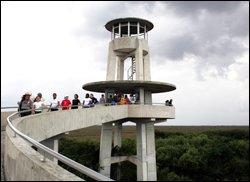The article discusses the geology and ecology of Everglades National Park, emphasizing how past geological events and ongoing environmental processes have shaped its landscapes. The Everglades, primarily composed of limestone, has a unique hydrology that influences its vegetation and ecosystems. Key features include:
-
Geological Foundations: The Everglades was submerged post-Ice Age, with its limestone substrate supporting rich ecosystems.
-
Vegetation Diversity: Variation in elevation leads to diverse vegetation, from pine forests to mangrove swamps, each influenced by hydrology.
-
Hydrology Changes: Human activities have significantly altered natural water flows, impacting wildlife and plant communities.
-
Soil Types: Marl and peat soils characterize the region, with marl forming in aquatic environments and peat from accumulating plant material in anaerobic conditions.
-
Subprovinces: The article details various geological subprovinces within south Florida, including the Okeechobee Basin and Big Cypress Swamp, each with unique geological characteristics shaped by sea-level changes throughout the Ice Ages.
- Ecological Importance: Areas like the Ten Thousand Islands serve as vital nurseries for marine life and are crucial for wildlife protection.
Overall, the interplay of geology and hydrology defines the ecosystems of the Everglades, underlining the impact of natural and human-induced changes.


